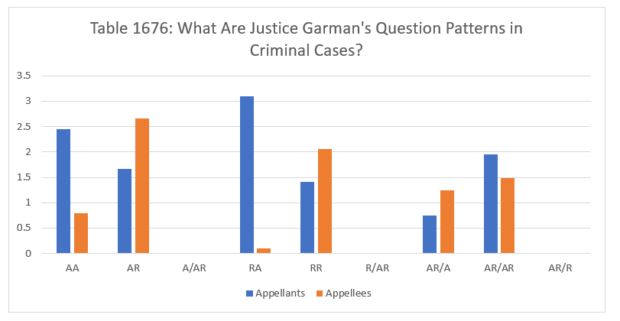Last time, we reviewed Justice Garman's record in oral arguments in civil cases, both when she agreed with the majority and when she didn't. Today, we're reviewing the criminal docket.
Once again we begin with cases in which the Court affirms. When Justice Garman agrees, she more heavily questions the losing appellant, 2.44 to 0.79. She has participated in no cases where the majority affirmed and Justice Garman wanted to return a split decision. When the majority affirms but Justice Garman wants to reverse, she more heavily questions the appellees - 2.67 to 1.67 for appellants.
For criminal reversals when Justice Garman joins the majority, she more heavily questions the losing appellees - 2.06 to 1.4 for appellants. When the Court reverses but Justice Garman wants to affirm, she more heavily questions the appellants, 3.1 to 0.1 for appellees. When the majority wants a split decision but Justice Garman wants to affirm, she more heavily questions the appellees - 1.25 to 0.75 for appellants. When Justice Garman agrees with the majority in a split decision, she most heavily questions the appellants: 1.95 for appellants to 1.48 for appellees.

Join us back here next Tuesday as we turn our attention to Justice Kilbride.
Image courtesy of Flickr by Tripp (no changes).
Originally published by Illinois Supreme Court Review on the 30th of October, 2020
The content of this article is intended to provide a general guide to the subject matter. Specialist advice should be sought about your specific circumstances.

